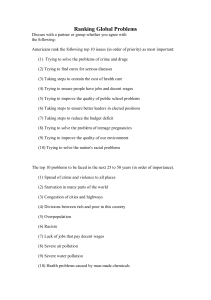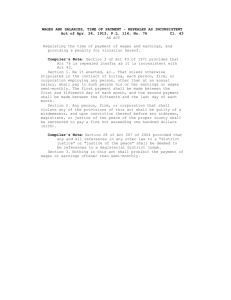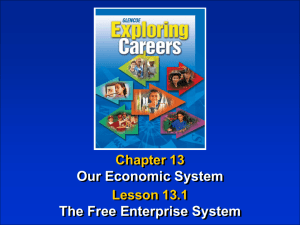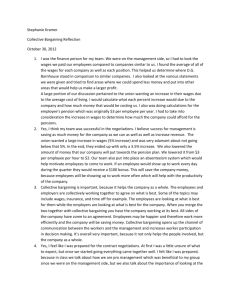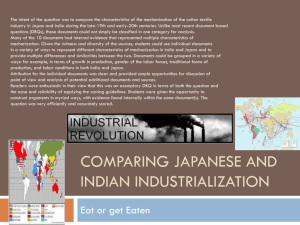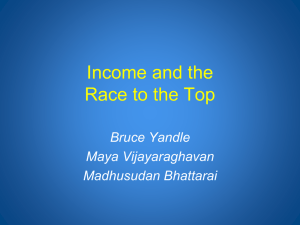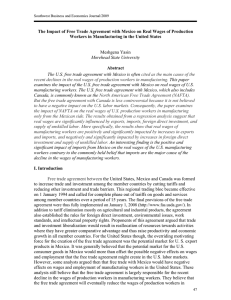Controversies in Trade Policy
advertisement
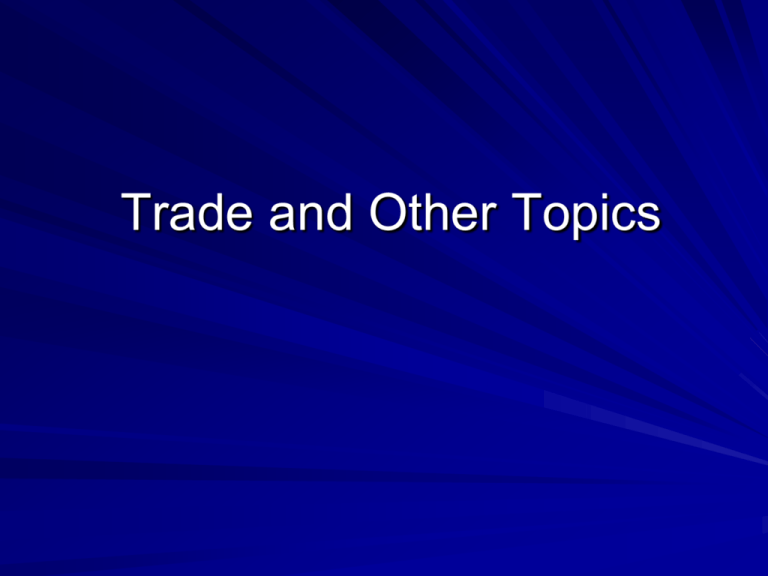
Trade and Other Topics Trade and Labor An increase manufactured exports from low and middle income countries has been a major change in the world economy over the last generation. Compared to rich country standards, workers who produce these goods are paid low wages and work under poor conditions. There is significant opposition to free trade because of this fact. One example of this situation is the export processing zones in, for example, the Philippines or China. Opponents of the NAFTA have argued that it is now easier for employers to replace high wage workers in the US with low wage workers in Mexico. Trade and Labor Trade theory: – A Ricardian model predicts that while wages in the exporting country should remain lower than those in the US because of low productivity there, they will rise relative to their pre-trade level. – A Heckscher-Ohlin model predicts that unskilled workers in the US will lose from free trade, but the unskilled workers in the exporting country will gain. Trade and Labor Despite the low wages earned by workers in Mexico, both theories predict that those workers are better off than they would be if trade had not taken place. – Evidence consistent with these predictions would show that wages in the export processing zones have risen relative to wages in other sectors. – We could also compare working conditions in EPZs with the working conditions in other sectors. Trade and Labor Standards Labor activists (labor unions, and the ILO) want to include labor standards in trade negotiations. – These labor standards are typically opposed by the target governments of low and middle income countries. They see the standards’ use as a protectionist policy. – Standards set by high income countries would be expensive for low and middle income producers. – Another alternative is a system that monitors wages and working conditions and makes this information available to consumers through certification (example: fair trade coffee). – This policy might have a very limited effect since it is likely the certified products will be sold at a premium. – The question of child labor (any difference?). Trade and the Environment Compared to rich country standards, environmental standard in low and middle income countries are lax. The environmental Kuznets curve (EKC): – Pollution increases in early stages of development but decreases in later stages. – Technique, scale, and composition effects. – The later decrease in pollution is due to higher demand for a clean environment, better abatement technology and the ability to mobilize more resources toward that end. While the EKC idea is popular, it is not necessarily true! Trade and the Environment Even if trade leads to higher income, there might be other ways in which trade directly (and possibly negatively) affects the environment. – The ‘pollution haven’ effect – do polluting industries change their locations as a result of changes in environmental regulations? – The ‘pollution haven’ hypothesis – do polluting industries change their locations as a result of changes in trade policies? Trade and the Environment Two policy questions: – Should international trade law constrain domestic environmental policies This might be done to prevent a ‘race to the bottom’ in environmental regulation? Put differently, should we allow countries to use environmental policy to achieve desired trade outcomes (like a desire to protect domestic industries – example: hormonefree beef in Europe) – Should trade policy be used as a tool to achieve desired environmental outcomes? The case of ‘dolphin-free’ tuna or ‘turtle-free’ shrimps. Cases of natural resource extraction (like tropical hardwoods). Cases of trans-boundary pollutants (like the ozone layer or global warming). Trade and the Environmental Standards Some environmental activists want to include environmental standards in trade negotiations within the WTO: – However, universal environmental standards are generally opposed by governments of low and middle income countries. – International standards could be used as a protectionist policy or a basis for lawsuits when domestic producers did not meet them. – Standards set by high income countries would be expensive for low and middle income producers. GM Crops Trade in Multilateral Environmental Agreements Types of trade measures in MEAs: – Trade bans. – Export/import licensing requirements. – Notification requirements. – Packaging and labeling requirements. The Environment and TRIPS Patents on environmental findings: – The case of blue jeans. – Bio-medical uses of plants and wildlife. – Using indigenous knowledge.

